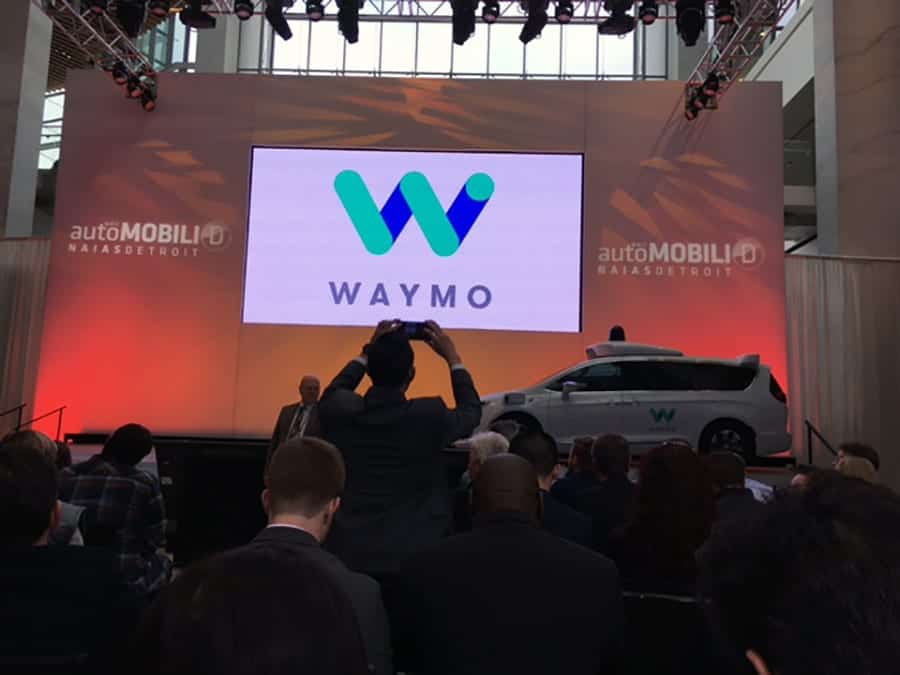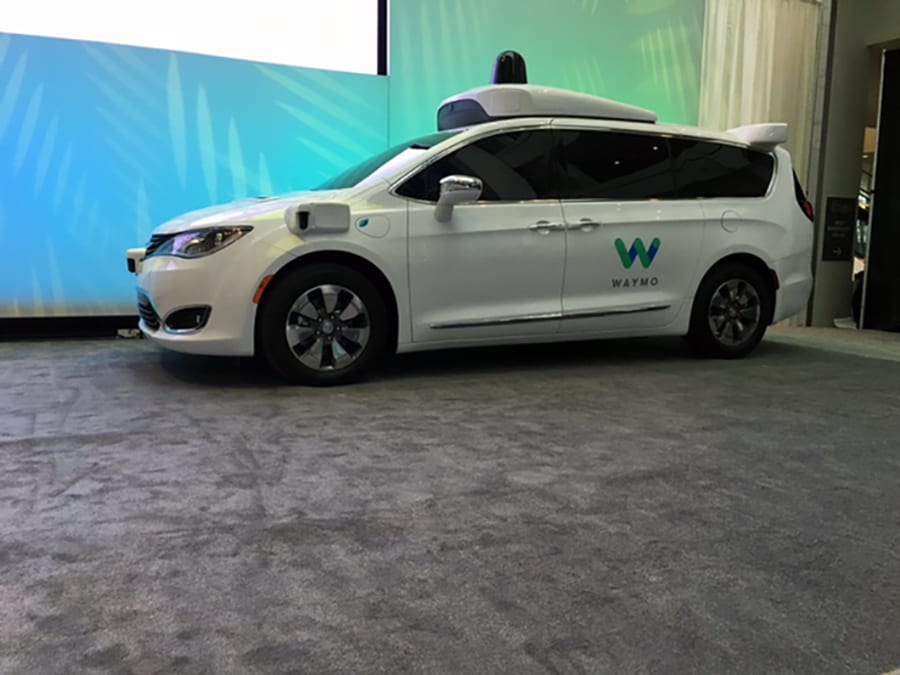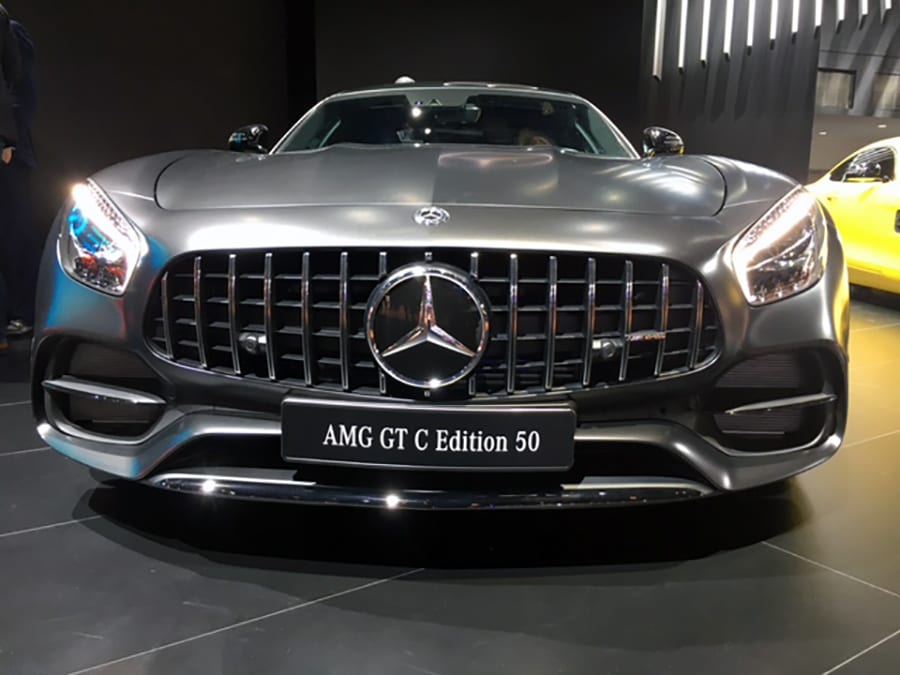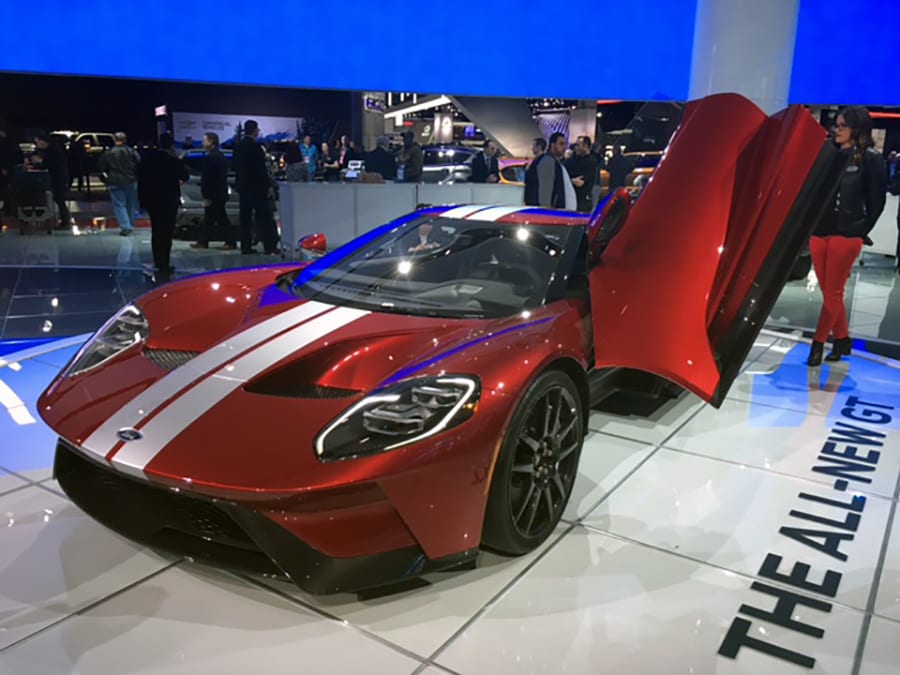Detroit’s auto show: trucks, tech and a split personality

DETROIT — The first new model introduced at this city’s annual auto show wasn’t a Ford, a Chevy or a Toyota. It was a Waymo. But you can’t buy it. Yet.
Waymo is Google’s driverless-car subsidiary of Google; its first collaboration with an established automaker is a Chrysler Pacifica minivan adapted for autonomous driving. That means cameras, sensors, lidars and radars are mounted on the vehicle’s roof and elsewhere. The protrusions give it a vaguely military look. Which is appropriate, because what’s going on now is a war for the high-tech future of the automobile.
“We don’t want to create a better car,” declared John Krafcik, Waymo’s CEO. “We want to create a better driver.” That driver being not a person but a computer.

This year the Detroit show — officially the North American International Auto Show, which runs through Jan. 22 — added presentations and press conferences dubbed AutomobiliD to spotlight the high-tech future of the car. At the same time, the show floor itself was filled with un-futuristic trucks and SUVs, which accounted for 60% of all U.S. vehicle sales last year.
When Vice President Joe Biden dropped in, he saw a show with a split personality. He also saw executives trying delicately to dodge the darts of another politician, President-elect Donald Drumpf, who has been pushing automakers to move production from Mexico to the U.S.
How did Detroit’s show come to straddle the profitable present (2016 was an all-time record sales year) and high-tech future? Well, what happened in Vegas didn’t stay there.
Last year, cars took center stage at the CES Show in Las Vegas, an event that immediately precedes the Detroit show. The dons of Detroit were shaken. Then they were stirred to present the Motor City, not Silicon Valley and certainly not Las Vegas, as the epicenter of the new electrified, connected and autonomous tomorrow in which people might buy “mobility services” from self-driving Ubers instead of buying cars. As the car wars between automakers and tech companies heats up, the PR wars to claim future-tech leadership are already hot.
Besides the Waymo press conference, AutomobiliD brought in Michigan Gov. Rick Snyder to proclaim that “Detroit is the place to be for mobility and autos.” Another speaker was Chris Thomas, a founding partner of Fontinalis, an investment firm that invests in the “next-gen mobility space.” He said: “Detroit’s past and present have positioned it perfectly to drive the future of mobility.”
Fortunalis, not coincidentally, is based in Detroit.
“Making prototypes is very easy,” said Carlos Ghosn, CEO of Renault, Nissan and Mitsubishi, in a not-so-subtle swipe at Waymo, while explaining that his companies are gearing up for the future. Ford’s publicists, meanwhile, arranged interviews with the chief of one of its newest and smallest business, Chariot, a “crowd-sourced network of commuter routes.”

Translation: digital hitch-hiking, sort of. Users download the Chariot app onto their smartphones, enter their requested commuting route, and when Chariot gets a critical mass of requests it adds the route — using Ford Transit vans. “We’re in San Francisco and Austin now,” Chariot founder Ali Vahabzadeh explained. “By the end of 2017 we’ll be in eight cities.” Chariot is part of a new Ford division called Ford Smart Mobility.
But back in the present, over on the show floor, Ford introduced two new trucks: the Ranger small pickup and the Bronco small utility, both names resurrected from the past. And the company announced its venerable F Series pickup truck, now America’s best-selling vehicle for 39 straight years, will get a “face lift” with new grilles, bumpers and headlamps.
Indeed, vast stretches of the cavernous Cobo Hall show floor contained absolutely no cars, only pickups, SUVs and vans. It showed America’s “stampede to trucks,” in the words of Mike Jackson, CEO of AutoNation, the nation’s largest public dealership chain. Lamborghini, Rolls-Royce and Porsche skipped the Detroit show, depriving it of a healthy helping of glamor.

To be fair, Toyota unveiled its new Camry, with President Akio Toyoda doing the honors. Ford’s new GT supercar, which has nothing to do with autonomous driving, was on display and drew plenty of lustful looks. And Daimler marked the 50th anniversary of its performance AMG line by showing its new GTC Edition 50. It will come in coupe and roadster versions and only a limited number — 50 of each, no surprise — will be made. The price, yet to be announced, will be commensurate with the limited production, the car’s 550 horsepower and its zero-to-60 of 3.7 seconds.
Nowadays, however, such traditional automotive statistics and terminology are no longer adequate for attending an auto show. Over at AutomobiliD, Waymo’s Krafcik was talking about autonomy tests equivalent to “300 lifetimes of driving” and Waymo’s “multi-sensor modules,” which the company has decided to build itself instead of purchasing from suppliers.
The new self-driving Waymo Chrysler Pacificas will be tested on public roads in California and Arizona later this month, he added. Just when these tests will evolve into daily use by ordinary people will depend on government regulators as much as the companies that make the vehicles and software. But at Waymo, Krafcik said, “We believe we’re at an inflection point in how this technology is applied.”

